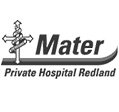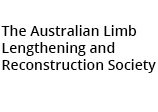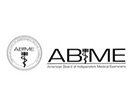Knee Arthroscopy
The following information is for patients who have torn the cartilage in one or both of their knees. The knee is constructed from meniscal and articular cartilage. Both have multiple functions such as load bearing, load transmission, joint stability, cushioning and knee lubrication. Articular cartilage covers the ends of the bones and joints. It is a smooth, white substance and is damaged or abnormal in patients with arthritis. Your knee contains two meniscal cartilages. These C-shaped structures, the medial and lateral, provide space between the tibia and the femur, preventing friction and allowing the diffusion of articular cartilage.
On this page you can find the answers to the following questions:
Do I need arthroscopy?
The most common injuries requiring arthroscopic knee surgery are twists or deep squats. This is often painful, accompanied by the one or more of the following symptoms:
- Pain
- Clicking
- Popping
- Catching
- Locking
- Buckling
- Giving way
- Swelling.
Locking results from torn cartilage being caught between the bones. It is possible to tear a cartilage without recalling any specific event which may have caused it. Generally, young, healthy cartilage is tougher and harder to tear and repeated trauma is more likely to be the cause in this age group.
Your physician can make a diagnosis of meniscal or cartilage tear after an examination. Regular X-rays cannot help to make a meniscal or cartilage tear diagnosis, as X-rays can only detect bone. They are, however, useful in making a diagnosis of arthritis. Images of meniscus can be achieved using an MRI (magnetic resonance imaging) scan. Although such a scan is quite costly, it has an accuracy of approximately 85–90%.
What does the procedure involve?
There are a range of treatment options, depending on your age, health, activity level and the severity of your condition. Generally, cartilage tears will not heal by themselves. They may respond well to the use of crutches, rest gentle physiotherapy or exercise. Maintaining good muscle tone and the use of anti-inflammatory medications may also be of benefit. With the resumption of normal activity, however, symptoms frequently recur.
Should these symptoms be so severe as to necessitate further treatment, the best way to achieve a diagnosis with accuracy is to arthroscope the knee.
The hope is that surgery will significantly improve the knee or other joints. At best there will be some residual symptoms including occasional clicks, non-painful pops, slight swelling and weather-change pain. Unfortunately, no surgery can return a damaged joint to its original function.
Removal of cartilage
An arthroscope is a miniature optical device that is inserted into the knee joint through a series of small punctures, usually three or four. The arthroscope can detect the torn cartilage. A cartilage tear is usually not repairable. Instead, small instruments are inserted and the torn part of the cartilage is removed, leaving the unaffected parts of the cartilage behind. Most patients can return home on the same day as the surgery. Crutches will be organised when you are discharged, if necessary.
Patients who have office jobs, sedentary work or those who work for themselves can go to work and drive within the next one or two days. Manual labour and sport activities require three to six weeks of recovery depending on the patient’s age and motivation.
Repair of cartilage
In some cases, cartilage is repairable. The torn cartilage is stitched together using arthroscopic instruments via a small incision on the back or side of the knee. This surgical procedure is slightly longer than cartilage removal. A knee brace, hinged to allow some movement, is needed for six weeks following the surgery. Crutches will be required for this period and can be organised upon discharge. Most patients can return home on the same day as the procedure.
Recovery times for a cartilage repair are longer than for cartilage removal. It may be as long as 8–10 weeks for sporting activities and labouring jobs.
Generally, the younger the patient the greater scope there is for cartilage repair. Patients in their forties are typically not candidates for cartilage repair (probably less than 5%) and will most likely undergo cartilage removal. The specific circumstances of your case will be discussed with you.
What are the complications?
Aspirin thins the blood and hinders its ability to clot. If you are using aspirin or medication that contains aspirin it is important that you discontinue its use at least 10 days before your surgery. Failure to do so will result in excessive bleeding and swelling in the knee after arthroscopic surgery.
Swelling is the most common problem. If it occurs your recovery will be prolonged, but will diminish and not be a long term problem.
Infection is a serious risk. Should this happen, you will be readmitted to hospital to undergo prolonged intravenous antibiotic treatment and one or more arthroscopic interventions to clean out the knee. You may experience residual stiffness and loss of motion.
Phlebitis (blood clots in the leg) is a possibility and may require admission to hospital for treatment with blood thinners. In the event that the blood clot becomes loose and travels to the lung it can be life threatening. There is a less than 1$ likelihood of infection or blood clots.
There are other, rare complications associated with cartilage repair. The needles pushed through the cartilage and out the sides or back of the knee may puncture nerves or blood vessels. Nerve damage can lead to numbness or hypersensitivity of the skin and partial paralysis of the muscles below the knee. At its worst, blood vessel damage can result in the removal of a limb.
Not all of the consequences of a partial removal of torn cartilage are known. The development of arthritis on the side from which the cartilage is removed is the most common problem. Usually this occurs many years after the procedure. Anecdotal evidence suggests that this problem is more common when total, as opposed to partial, cartilage removal has been performed. Leaving the torn cartilage in place is not usually a viable option. It would lead to continuous and often disabling pain, not to mention the heightened chance of joint surface damage and arthritis.
A repair is the best option, if the conditions are favourable. Partial cartilage removal should result in fewer symptoms and better knee function. A successful repair, without complications or re-tear, should almost be normal.





















